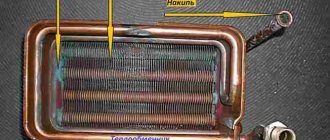On a frosty day on the street you can always spot people asking others for a “light.” This all happens because the car battery really does not like the cold. When the air temperature drops battery charge drops. On average, this is 1% for every degree if the air temperature is below 15 degrees. What to do if it’s 20 degrees below zero, or even more?
In such a situation, the battery will need much more effort (energy) to start the engine, because the oil will thicken, some people have diesel fuel. In such a situation, many car owners store the battery at home; starting the engine in cold weather with a warm battery will be much easier. In addition to this, there is another way; in the article we will look at how to insulate a battery for the winter with your own hands .
Is it worth insulating the battery for the winter?
So is it necessary to insulate the battery in winter? Some car owners simply remove the battery and take it to a heated room overnight, for example, to their home. Proven method. But what to do if the car was left far from home, in a parking lot in the city, or there is no way to take it home. There is a way out of the situation - protecting the battery from frost by insulating it.
Battery insulation is necessary in order to keep the batteries warm for as long as possible so that there is no loss of capacity.
When constantly exposed to negative temperatures, a battery without protection (insulation) operates constantly in negative mode. The point is that it gives out more charge than it receives.
If the temperature is too low, the battery may be completely discharged , or it will work constantly undercharged. And it may happen that at some point there is not enough charge to start the car engine, so you need to know how to check the battery charge level.
Worth knowing! Frequent and short trips at sub-zero temperatures are very damaging to the battery. Frequent engine starts during short trips kill the battery.
The battery under the hood can be placed in such a way that it is constantly exposed to cold oncoming air, which can lead to severe hypothermia of the electrolyte. As a result, the battery capacity decreases. Therefore, it is best to make some kind of protection for the battery from frost, and how to insulate the battery for the winter with your own hands, read below.
How to insulate a car battery for the winter
The best temperature for operating a car battery ranges from -15 to +25 degrees . As noted above, if the air temperature drops below -15 degrees, the battery loses capacity. For this reason, many car owners prefer to store it at home, but this is not entirely convenient, because... it must be constantly disconnected and connected.
There is another way - insulate the battery for the winter . This old-fashioned method shows in practice that with daily use of the machine and night idle time of 8 hours, this method can significantly minimize the loss of battery capacity. Let's look at how to insulate a battery for the winter with your own hands.
How to insulate a battery for the winter with polystyrene foam
Polystyrene foam is an inexpensive material; you can always find it in a store or at home. It is enough to choose the required size and thickness. You need to make a box from polystyrene foam, tightly sealing the joints and walls.
The battery is then placed in this box and covered with a foam cover, in which holes are made for the wires. It is very important to ensure that there are no gaps that would allow air to enter.
How to insulate a battery for the winter with foil insulation
Folgoizol is a fairly flexible and comfortable material. Guarantees very good thermal insulation. We recommend using three layers for greater effectiveness.
- Measurements are taken, foil insulation is cut out onto the walls of the required dimensions.
- Then foam plastic about 2 cm thick is cut out. This will be the second (middle) layer.
- And the 3rd layer (outer) is again foil insulation.
It is better to glue polystyrene foam with glue, and foil insulation is secured with tape. The lid is made using the same principle. The thermal chamber for the battery is ready. Its disadvantage is that in this case there will be no heat from the engine, and when charging the battery it emits too little heat.
How to insulate a battery for the winter with felt
You can also insulate the battery with felt, sewing it into a kind of case. You can use several layers of felt. This method has proven itself in practice, especially if you use the car every day. This case will keep the battery warm for 4 to 8 hours. A significant disadvantage is that the heat from the motor will be poor.
The insulation of a car battery must be taken seriously and with full responsibility. This must be done before frost sets in. And besides, it is very important to know what material to use for this, so as not to harm the car with your actions. Do not use materials that are easily flammable; do not use fur, down pillows, or cardboard.
How to make it yourself
If you are wondering about a thermal case with your own hands, then making one is not that difficult. Many people use penofol as the main heat-insulating element. This is foamed polyethylene with a reflective surface.
One layer will not be enough, so first you should wrap the battery with the first layer with the shiny surface inward, then the second outer layer, on the contrary, with the shiny surface outward. In this way we imitate the effect of a thermos, the temperature will slowly penetrate inside and also come out. The top and bottom of the battery are made the same - the bottom and the cover, special holes are cut for the terminals. Ponofol can be secured with special construction tape.
Watch this useful video.
This is where I will end my article – review. Make a thermal case wisely, otherwise it will only cause trouble. Read our AUTOBLOG.
How to keep the battery warm in winter if the car sits for a long time
The methods described above work well if the car does not sit idle for a long time. The fact is that this kind of insulation has disadvantages :
- It will not be possible to keep warm for a long time. If you leave the car overnight, even with insulation, the battery will still cool down. Keeps warm for an average of 4 to 8 hours .
- Due to this type of insulation, heat does not flow from the car engine. As a result, the battery will still freeze and discharge.
Let us repeat once again that insulating the battery using various wrapping methods only works if the car is used regularly and without interruption.
What to do then, and how to insulate the battery for the winter with your own hands if the car is idle at night and trips are not frequent?
Thermal blanket. Insulation of battery with engine
Many drivers respond positively to this method, because... it is the most practical and effective. In addition, it helps preserve engine heat.
You can sew a special cover yourself, or you can purchase it at a car store. It covers the engine and battery, which is why the battery, being next to a warm engine, does not have time to cool down.
You should also cover the radiator with cardboard to prevent oncoming cold air, this will provide additional protection. And the battery itself is insulated. It is very important here that you do not need to insulate the side facing the engine. Warm air should come from the engine and warm the battery.
Thermal case for battery
In a car store you can find a thermal case for a heated battery for sale. Heating elements allow you to maintain the optimal temperature of the battery.
The principle of its operation is as follows:
- The battery is placed in this case.
- When the engine starts, the plates begin to heat the battery to 25 degrees.
- When stopped, heating stops, and the thermal case itself retains heat, reducing heat loss.
This thermal protection for the battery from frost is very effective, because In this case, the battery cools down longer than usual.
Criteria for choosing a thermal case
Let's look further at what to look for when buying a heated case for a car battery. The main factors influencing the success of the acquisition are the following:
- thermal case type - simple insulation in the form of a cover or a tank equipped with an autonomous heating system;
- size of the device - it is important that it fits on the standard platform, to do this, first measure the dimensions of the battery, also take into account the presence of terminal clamps and make sure that there is free space on the platform of about 1.5 centimeters on all sides;
- cost (no comments);
- The thermal device purchased must match the battery mounting method.
Since there are many types and types of thermal cases, it is important to understand the labeling. Check out an incomplete selective list of the most commonly used markings:
- TK-A1 – for small-sized batteries, mainly of Asian origin;
- TK-E3 – for medium-sized batteries (European case type and dimensions);
- T3G-1A – thermal case for truck power supplies, the last letter of the marking indicates a modification of 4 components;
- T3G-4V - a device for protecting truck batteries, number 4 indicates the size of the case, symbol B indicates a three-element design (two thermoses for two batteries and a common cover);
- T3G-3S – for truck batteries (size 3), symbol C indicates a two-component design (common thermos and single cover);
- NTA-1/2 - heating element, the first number indicates the size of the thermostat, the second - the number of heating plates.











